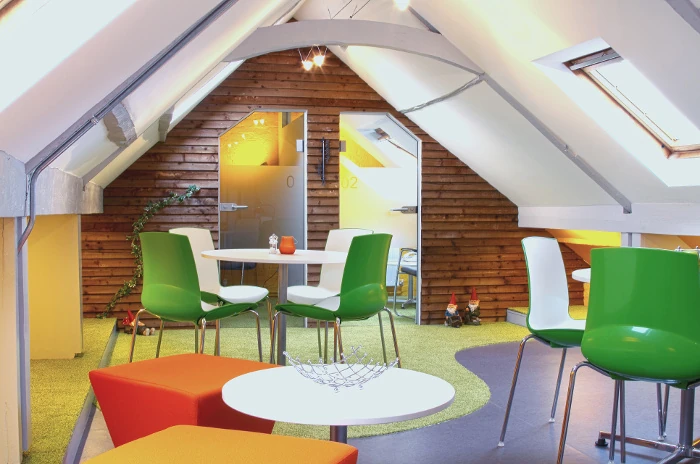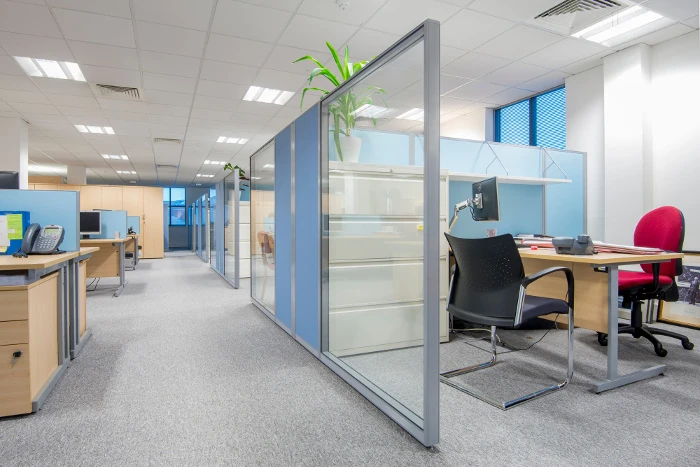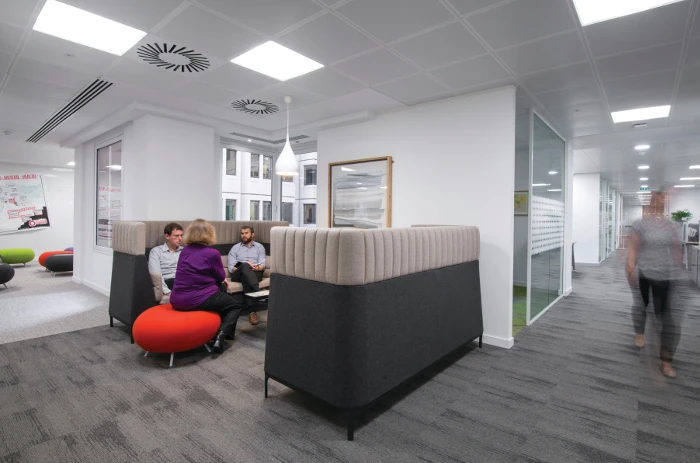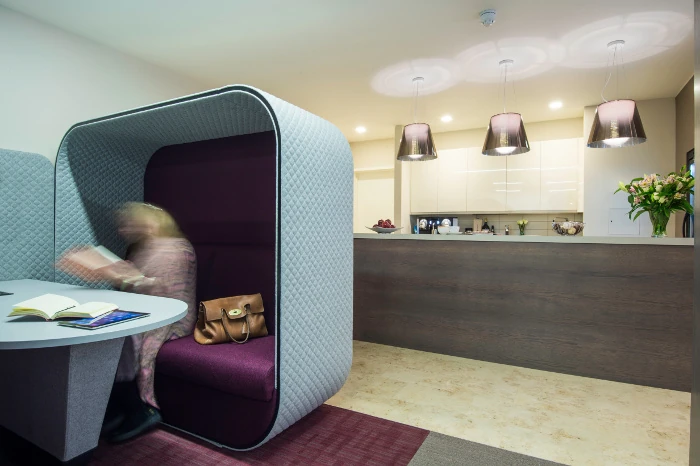Don't let the open office distract you
04/08/16< Back to news index

Schools of thought increasingly suggest that open-plan offices create a distracted and less productive workforce. According to a survey by the business manufacturer Brother UK, 64 per cent of workers are interrupted 20 times a day - and when doing something complicated - it can take them 15 minutes before they are fully re-focussed on what they were doing. If this happens just four times a day, that is an hour lost. With clever space planning, it doesn't have to be that way.
A publication by Public Health England on the impact of physical environments on employee wellbeing recommends that employers 'provide a variety of work spaces for different types of working as well as private spaces and quiet rooms for those who require confidential conversations and focus'. Rather than reject open-plan, a quiet zone can be a simple way to minimise disturbance when undertaking a task that requires your full attention.

Employees feeling under surveillance is another issue that can prevent people from concentrating. We try to locate staff in positions where they are not overlooked, especially if they're doing work that's confidential and can't have their screen on display to everyone that's walking by. As obvious as it sounds, we try to put people somewhere where they're not outside someone's door or on route to the toilets or kitchen. For professions where staff are less receptive to the open-plan environment, you can incorporate dividing screens as we did for the law firm RHW Solicitors.
When space is limited and you can't provide quiet zone, a telephone booth hung on the wall or specialist furniture can be good options.
Pictured below, we used high back sofas for the Health Foundation and cocoon shaped chairs for the casino Les Ambassadeurs. They have been designed to enhance audio privacy.


A study by Gensler found that 'balanced workplaces - those prioritising both focus and collaboration - score higher on measures of satisfaction, innovation, effectiveness, and performance.' Some of the closed offices I see are lifeless; people are shut away in their cells as though it's a prison. Open-plan can be great for communication and better for collaboration - fostering a less hierarchical, more open culture where the door is always open because there aren't any. There are benefits to both open-plan and closed offices. With clever design, you can have the best of both worlds.